Abstract
Behavioral contracting was used to encourage physical exercise among college students in a multiple-baseline design. Subjects deposited items of personal value with the experimenters, which they could earn back on fulfillment of two types of contract contingencies. Subjects selected weekly aerobic point criteria, which they could fulfill by exercising in the presence of other subjects. In addition, subjects contracted to observe and record the exercise of other subjects and to perform an independent reliability observation once each week, with both of these activities monitored by the experimenters. Results indicated that the contract contingencies produced increases in the number of aerobic points earned per week for seven of eight subjects, that the aerobic point system possesses several advantages as a dependent variable for behavioral research on exercise, and that inexperienced observers could be quickly trained to observe exercise behavior and to translate those observations into their aerobic point equivalents. Finally, in a followup questionnaire completed 12 months after the end of the study, seven of the eight subjects reported that they were earning more aerobic points per week than had been the case during the baseline condition of this experiment.
Full text
PDF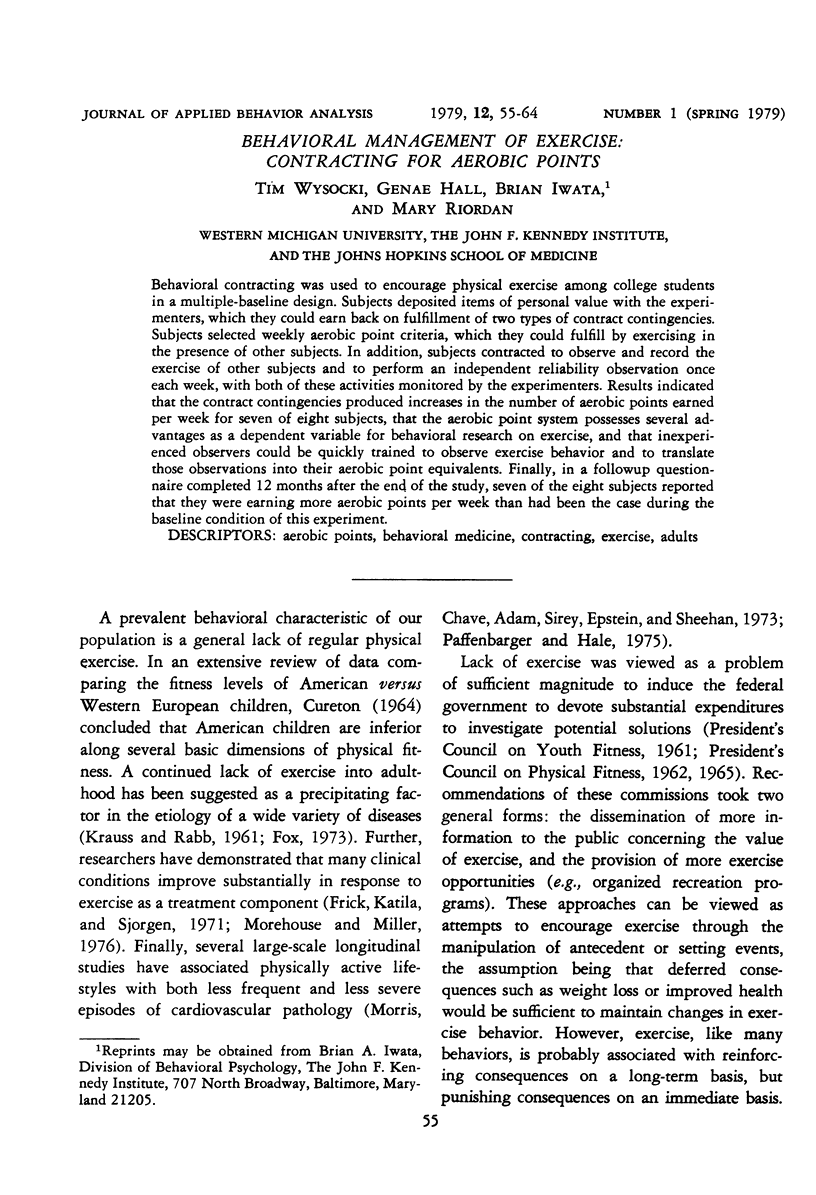
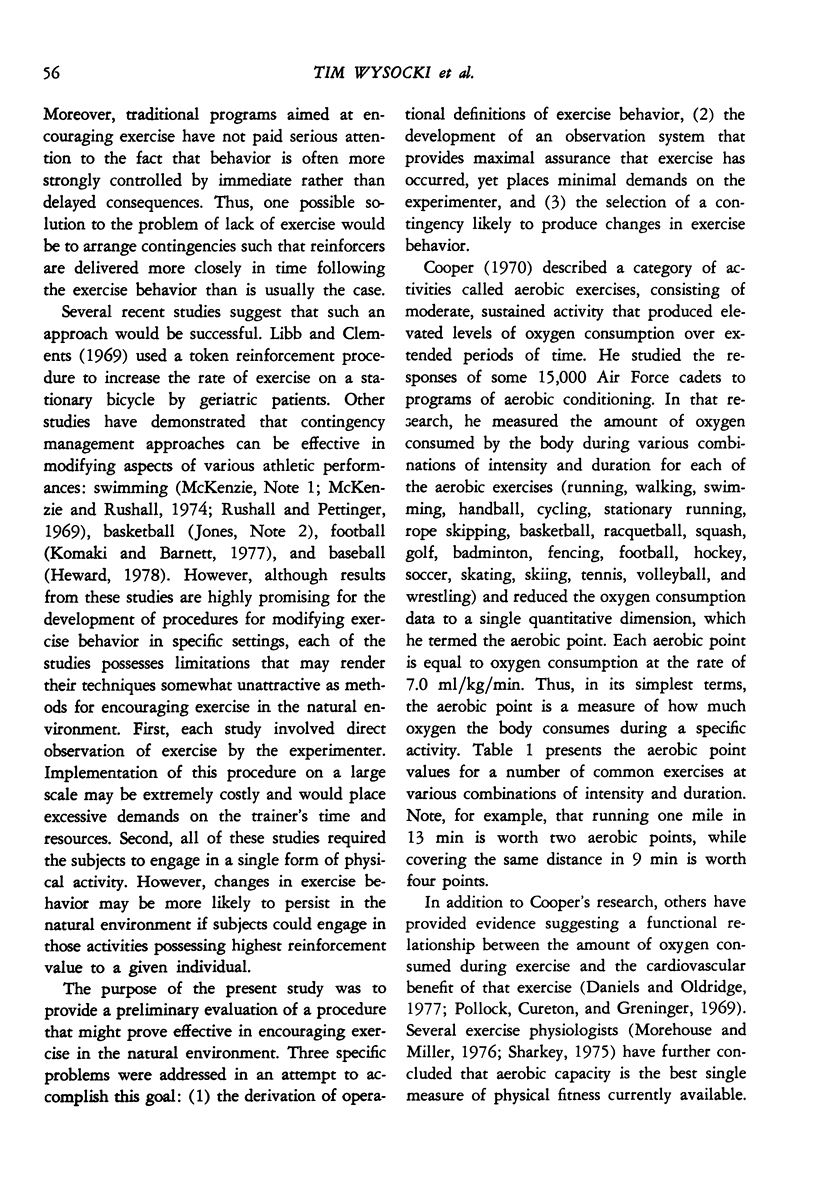
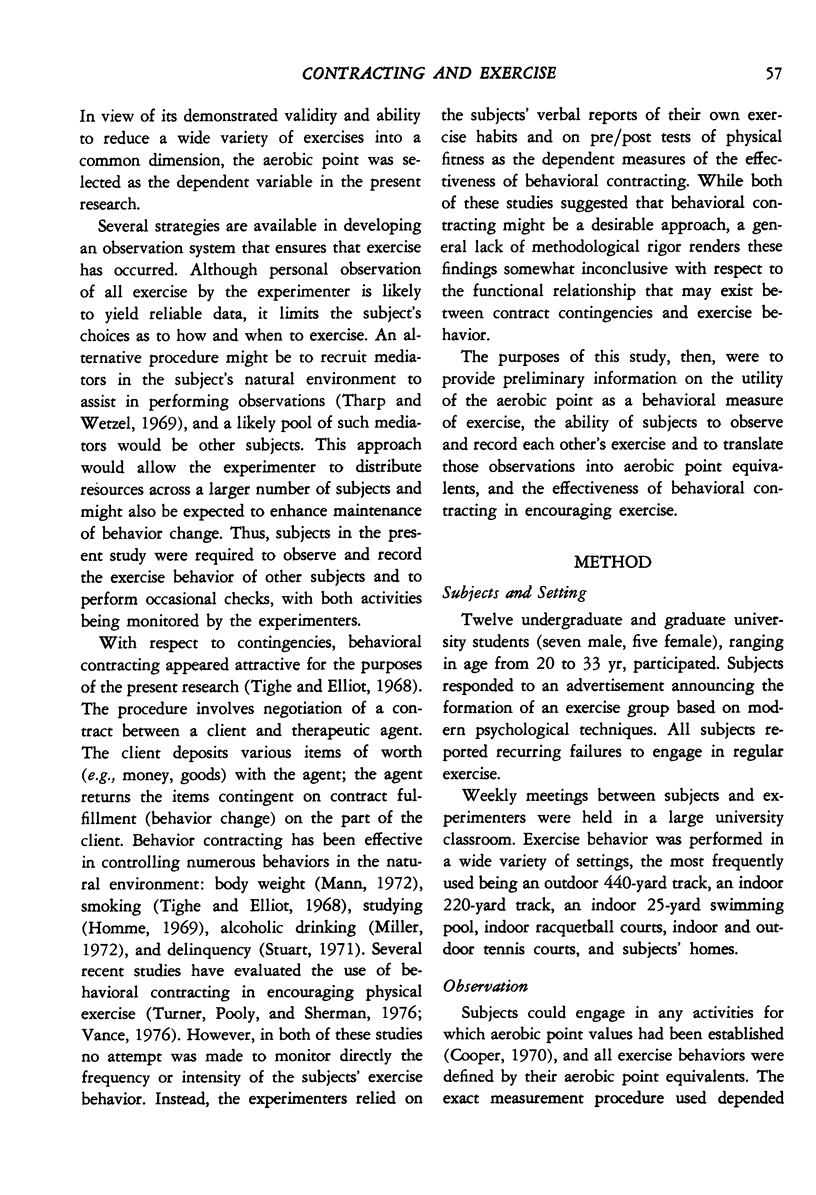
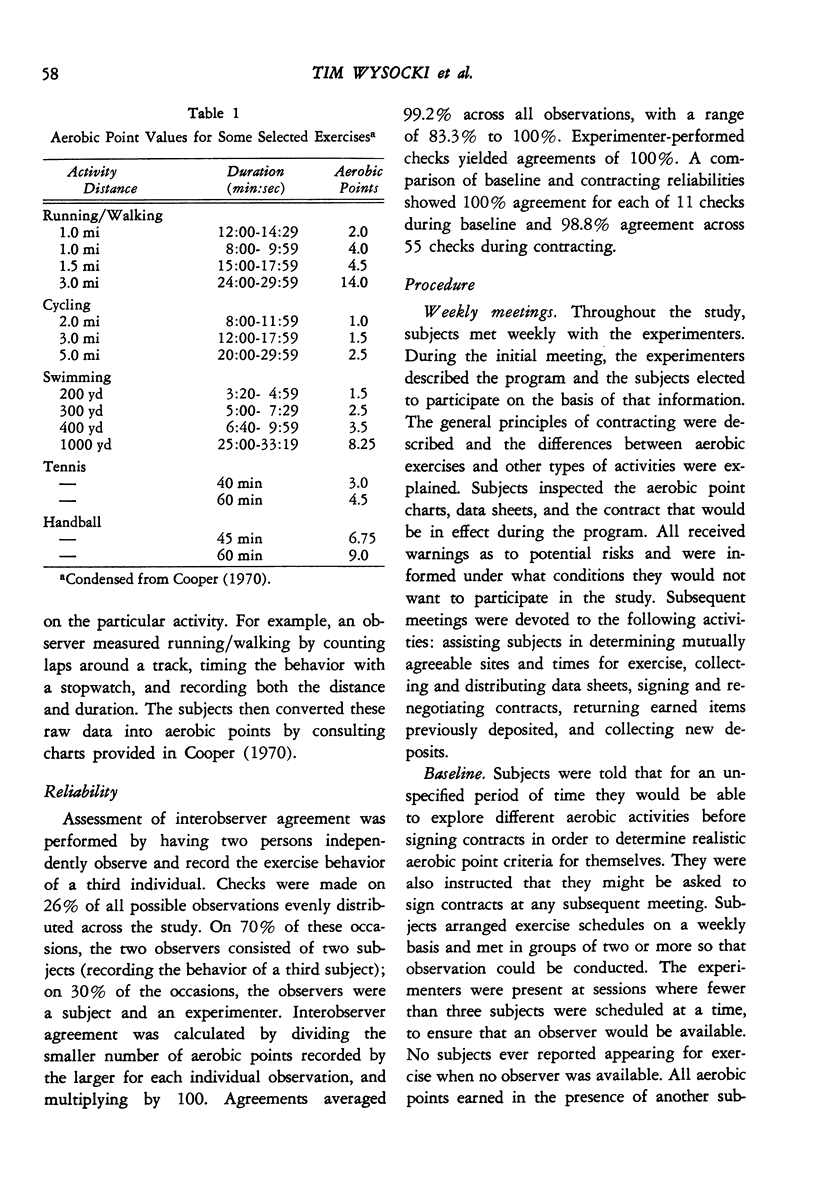
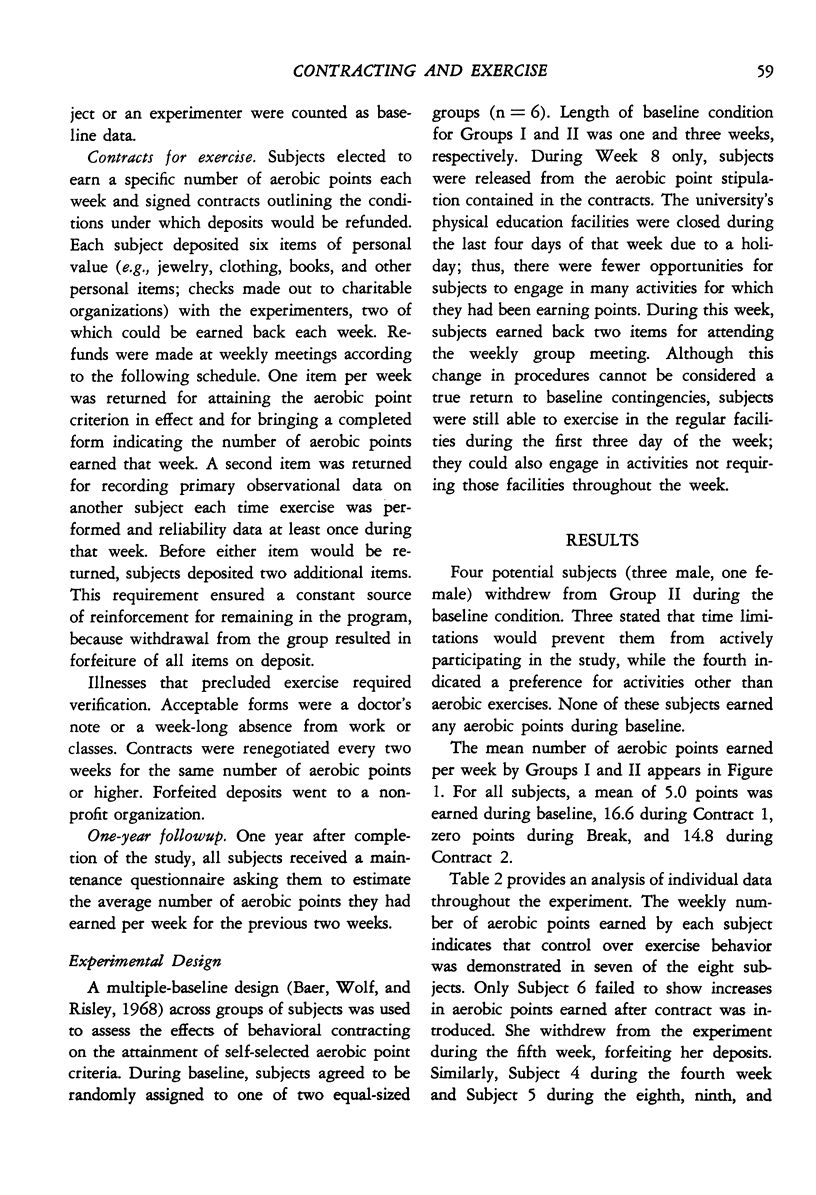
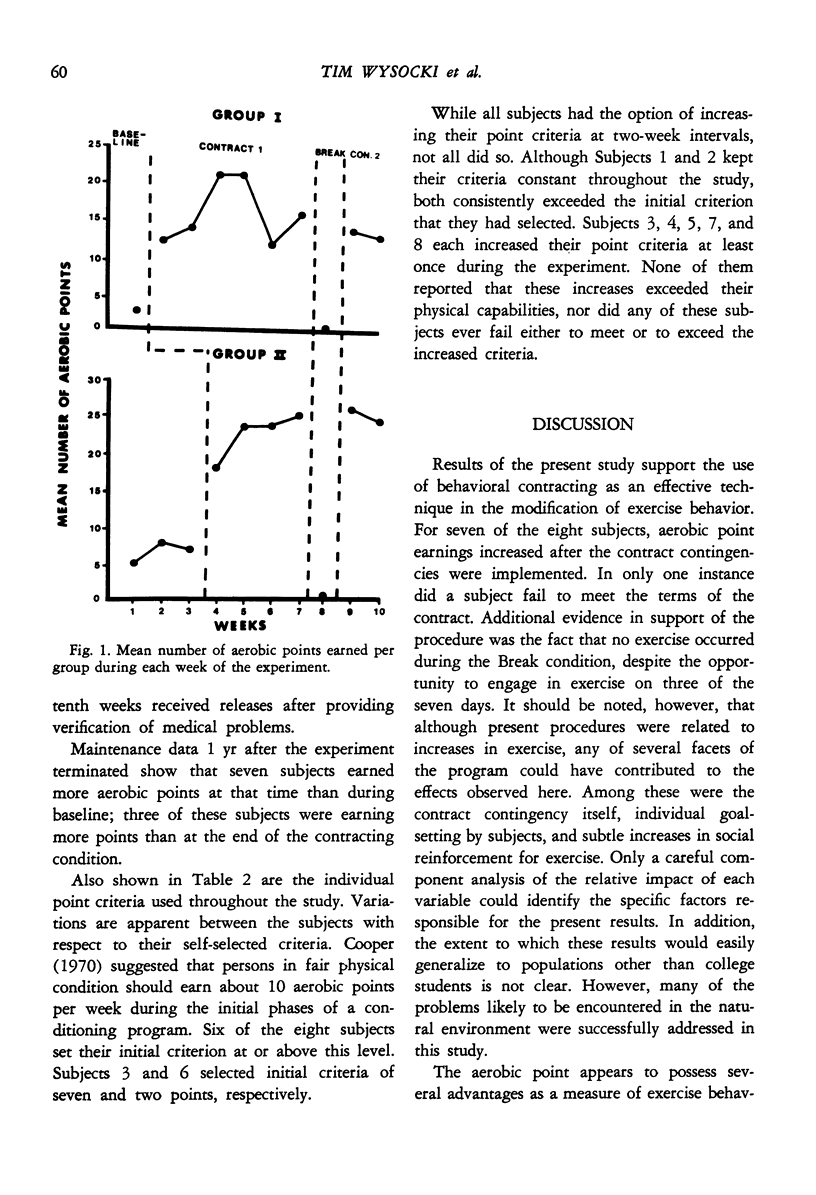
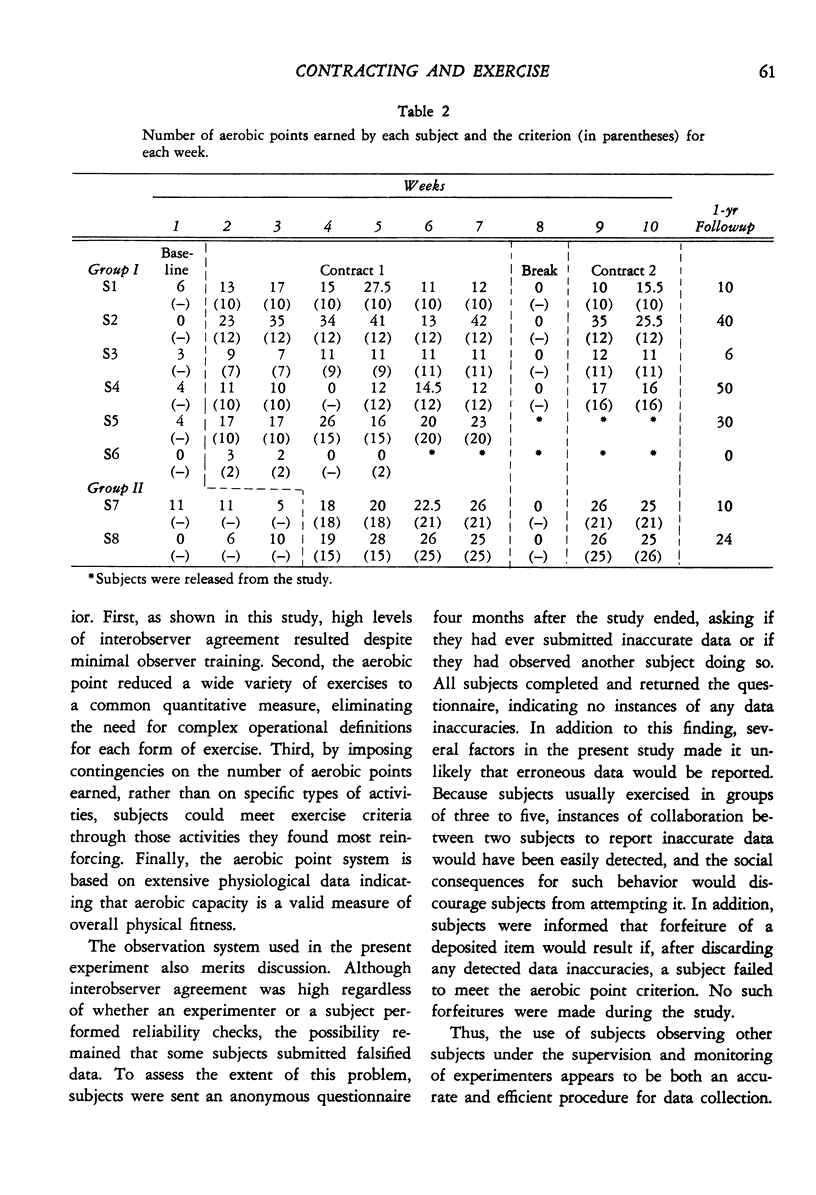
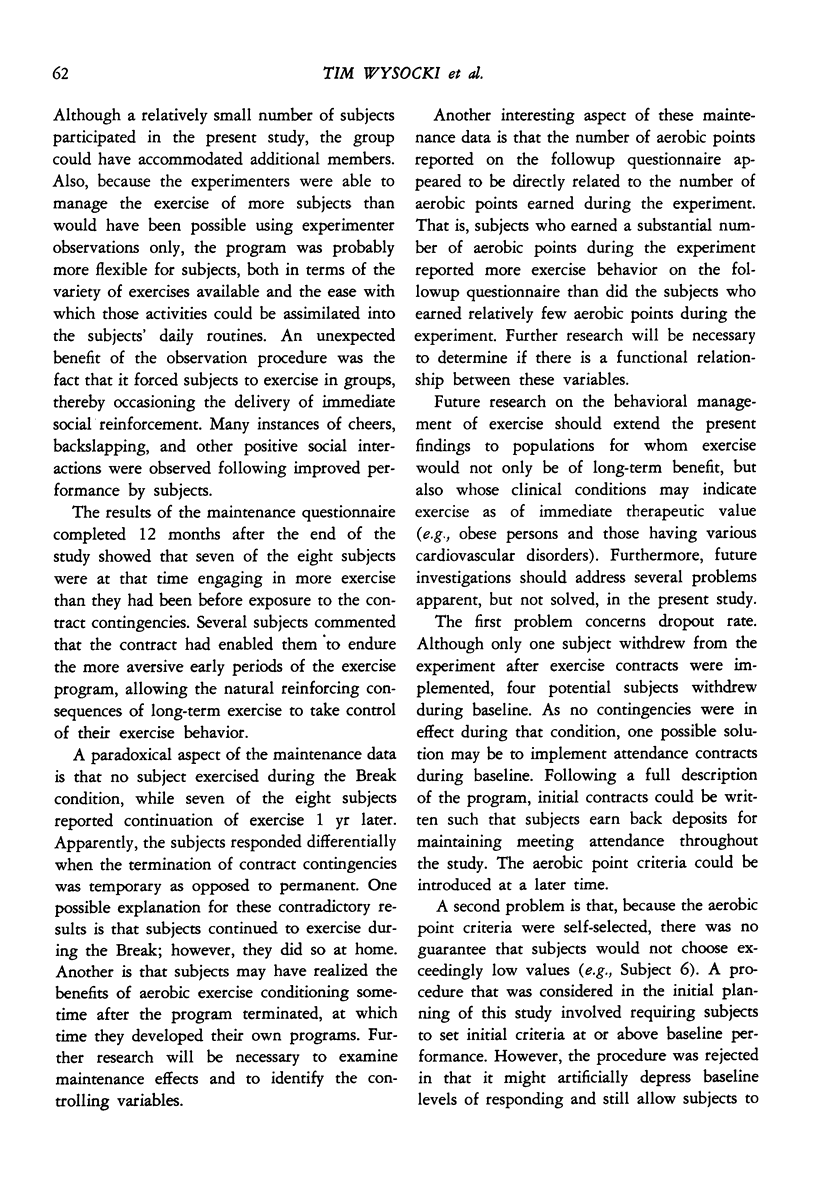
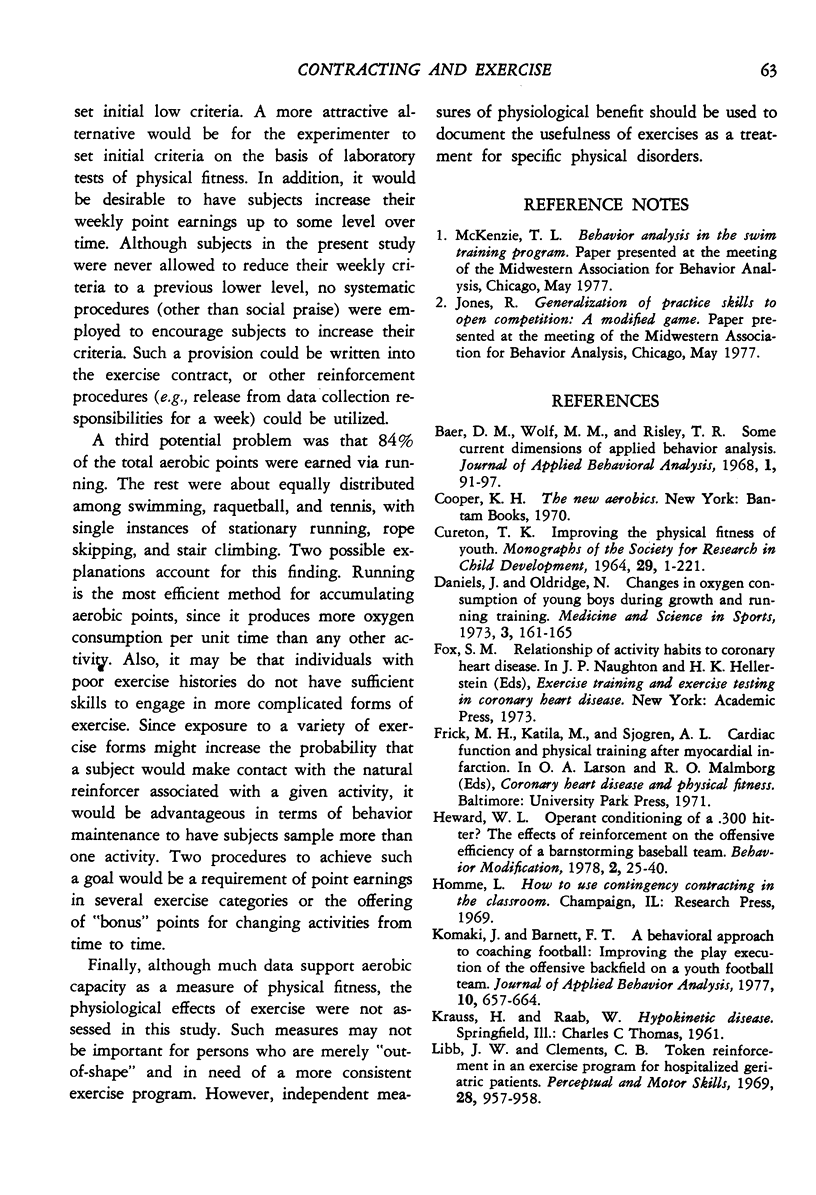
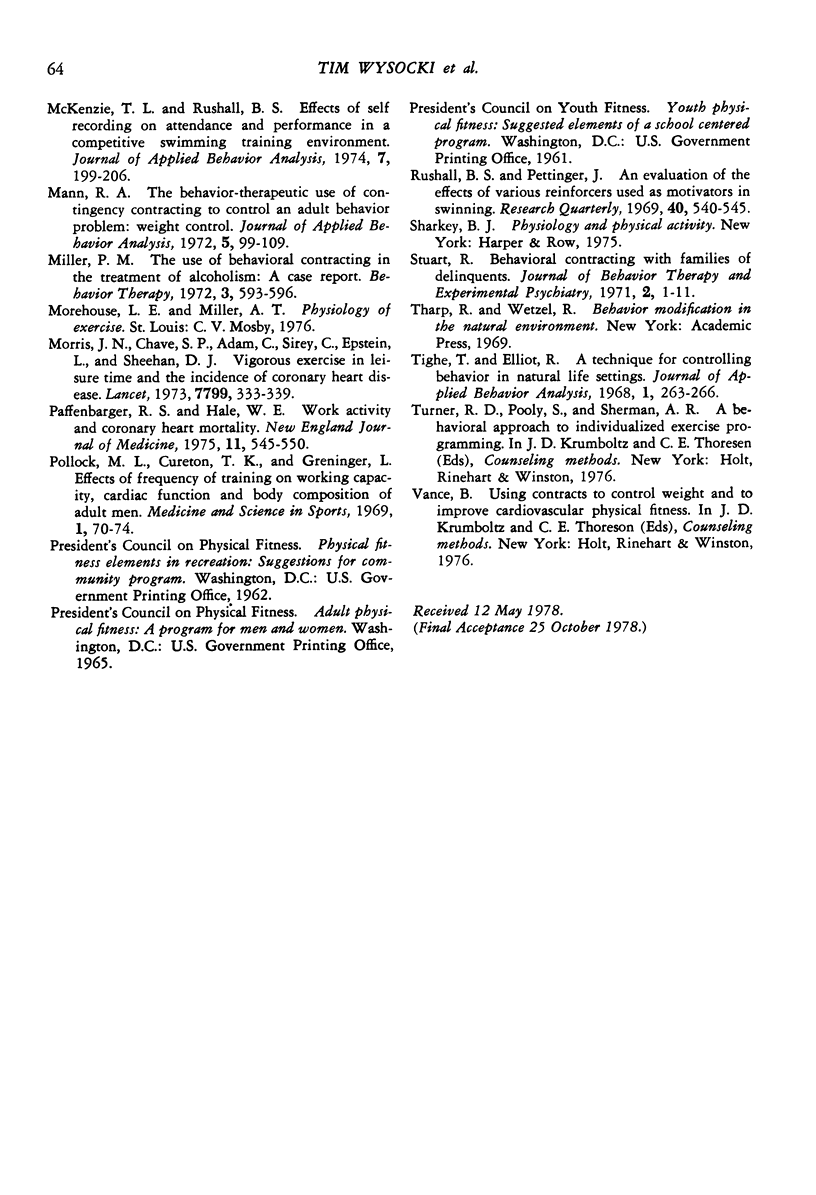
Selected References
These references are in PubMed. This may not be the complete list of references from this article.
- Baer D. M., Wolf M. M., Risley T. R. Some current dimensions of applied behavior analysis. J Appl Behav Anal. 1968 Spring;1(1):91–97. doi: 10.1901/jaba.1968.1-91. [DOI] [PMC free article] [PubMed] [Google Scholar]
- CURETON T. K., BARRY A. J. IMPROVING THE PHYSICAL FITNESS OF YOUTH: A REPORT OF RESEARCH IN THE SPORTS-FITNESS SCHOOL OF THE UNIVERSITY OF ILLINOIS. Monogr Soc Res Child Dev. 1964;29:1–221. [PubMed] [Google Scholar]
- Daniels J., Oldridge N. Changes in oxygen consumption of young boys during growth and running training. Med Sci Sports. 1971 Winter;3(4):161–165. [PubMed] [Google Scholar]
- Komaki J., Barnett F. T. A behavioral approach to coaching football: improving the play execution of the offensive backfield on a youth football team. J Appl Behav Anal. 1977 Winter;10(4):657–664. doi: 10.1901/jaba.1977.10-657. [DOI] [PMC free article] [PubMed] [Google Scholar]
- Libb J. W., Clements C. B. Token reinforcement in an exercise program for hospitalized geriatric patients. Percept Mot Skills. 1969 Jun;28(3):957–958. doi: 10.2466/pms.1969.28.3.957. [DOI] [PubMed] [Google Scholar]
- Mann R. A. The behavior-therapeutic use of contingency contracting to control an adult behavior problem: weight control. J Appl Behav Anal. 1972 Summer;5(2):99–109. doi: 10.1901/jaba.1972.5-99. [DOI] [PMC free article] [PubMed] [Google Scholar]
- McKenzie T. L., Rushall B. S. Effects of self-recording on attendance and performance in a competitive swimming training environment. J Appl Behav Anal. 1974 Summer;7(2):199–206. doi: 10.1901/jaba.1974.7-199. [DOI] [PMC free article] [PubMed] [Google Scholar]
- Morris J. N., Chave S. P., Adam C., Sirey C., Epstein L., Sheehan D. J. Vigorous exercise in leisure-time and the incidence of coronary heart-disease. Lancet. 1973 Feb 17;1(7799):333–339. doi: 10.1016/s0140-6736(73)90128-1. [DOI] [PubMed] [Google Scholar]
- Paffenbarger R. S., Hale W. E. Work activity and coronary heart mortality. N Engl J Med. 1975 Mar 13;292(11):545–550. doi: 10.1056/NEJM197503132921101. [DOI] [PubMed] [Google Scholar]
- Rushall B. S., Pettinger J. An evaluation of the effect of various reinforcers used as motivators in swimming. Res Q. 1969 Oct;40(3):540–545. [PubMed] [Google Scholar]
- Tighe T. J., Elliott R. A technique for controlling behavior in natural life settings. J Appl Behav Anal. 1968 Fall;1(3):263–266. doi: 10.1901/jaba.1968.1-263. [DOI] [PMC free article] [PubMed] [Google Scholar]


